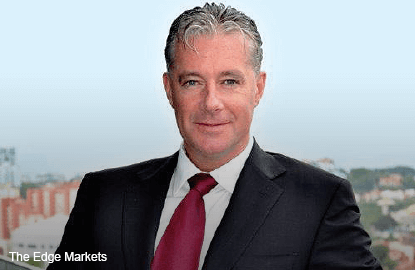
This article first appeared in The Edge Malaysia Weekly, on February 1 - 7, 2016.
 Navis Capital Group is hardly spooked by the current slowdown in the retail sector. In fact, the private equity (PE) fund — one of Southeast Asia’s largest — sees investment opportunities and is on a shopping spree for retail assets.
Navis Capital Group is hardly spooked by the current slowdown in the retail sector. In fact, the private equity (PE) fund — one of Southeast Asia’s largest — sees investment opportunities and is on a shopping spree for retail assets.
Industry sources say Navis acquired the Imperial Treasure Restaurant Group recently and is in talks to buy the Oriental Group of restaurants — a Malaysian Chinese fine dining group. Imperial Treasure has 26 restaurants in Singapore and China.
Apart from the restaurant groups, Navis also invested in the BiG group a few months ago.
When contacted on this, Navis co-managing partner Nicholas Bloy confirms the information.
“When we invest, we do it with a five-year time frame in mind. Yes, the retail landscape is bad right now, but a difficult retail environment creates an opportunity to buy ... there is still a degree of certainty in the retail sector. You can predict that there will be demand for high-quality Chinese dining, but nobody can predict, for example, when oil prices will bottom out,” Bloy tells The Edge over the telephone.
“I can’t say all retail [businesses] are good forever, but yes, we do see pockets of opportunity for investment in the sector with a longer time frame in mind.”
He also reveals that the PE fund has divested about US$1 billion (RM4.19 billion) worth of investments from 2015 up to this month. He says two exits will be announced soon.
“We invested about US$300 million last year and want to increase it to US$500 million this year,” Bloy says.
He adds that while the investment strategy for PE funds is for a longer period, the strategy for equities market investment should be for a shorter time frame. “What is true for PE may not necessarily be true for public equities. For public equities, the investment strategy should be 6 to 18 months.
“There are two areas to explore when investing for public equities. One is long-term industries that are attractive because they will keep on compounding earnings for, say, 20 years. Now, while businesses are doing fine, multiples have come down, so that has made some segments attractive — sectors like healthcare, which I would describe as a long-term steady growth sector that has good margins. It is cheaper to go in now compared with two years ago.”
He says another area to look at is industries that have gained an advantage due to recent changes such as the foreign exchange shift.
“The export sector is attractive as it has a nice tailwind, particularly if the costs are in ringgit and the top line is in a currency that has strengthened. In this case, margins will expand … for example, electronic component and rubber glove manufacturers are likely to have a nice run for a year or two.
“So, we are seeing two investment strategies for public equities. One is for investments that are permanently growing, from a low per capita consumption environment today to a high per capita consumption in a few years’ time. It is cheaper to get in now so that it can be considered a permanent opportunity. Then, there is the fleeting opportunity where investors can capitalise on foreign exchange movements where the ringgit has weakened,” he says, adding that the ringgit is likely to strengthen in 2016 and 2017.
Founded in 1998 and headquartered in Kuala Lumpur, Navis manages several private and public equity funds totalling US$5 billion.
It has managed public equities since 2005 and now has about US$170 million under management in three funds — Navis Asia Navigator Fund, Navis Al-Bahhar Fund and Navis Yield Fund. Among the listed stocks in their portfolios is SEG International Bhd.
Since its inception in 2005, the Navigator Fund has grown 186%, outperforming the MSCI ex-Japan index, which has increased only 61% over the same period.
The Yield Fund has increased 47% from its inception in October 2011 to Dec 31, 2015.
The Al-Bahhar Fund — which includes its predecessor closed-end fund — has risen 88% since its inception in 2007. This is in stark contrast to the MSCI ex-Japan Islamic index, which has shrunk 13% over the same period.
Public equities aside, Navis has made more than 60 PE portfolio investments since 2000, of which over 20 have been follow-on acquisitions, yielding a return consistently in excess of the top quartile benchmarks in the PE industry. Among the investments are Village Grocer, Dome, Brickfields Asia College and Alliance Cosmetics Group.
Industries in which Navis has invested include food processing, fast food, casual dining, industrial products, fast moving consumer goods, outdoor advertising, car rental, consultancy and professional services.
As at 3Q2015, Navis Asia Funds’ realised track record was a gross internal rate of return of 23% and money multiple of 2.4 times.
Save by subscribing to us for your print and/or digital copy.
P/S: The Edge is also available on Apple's AppStore and Androids' Google Play.